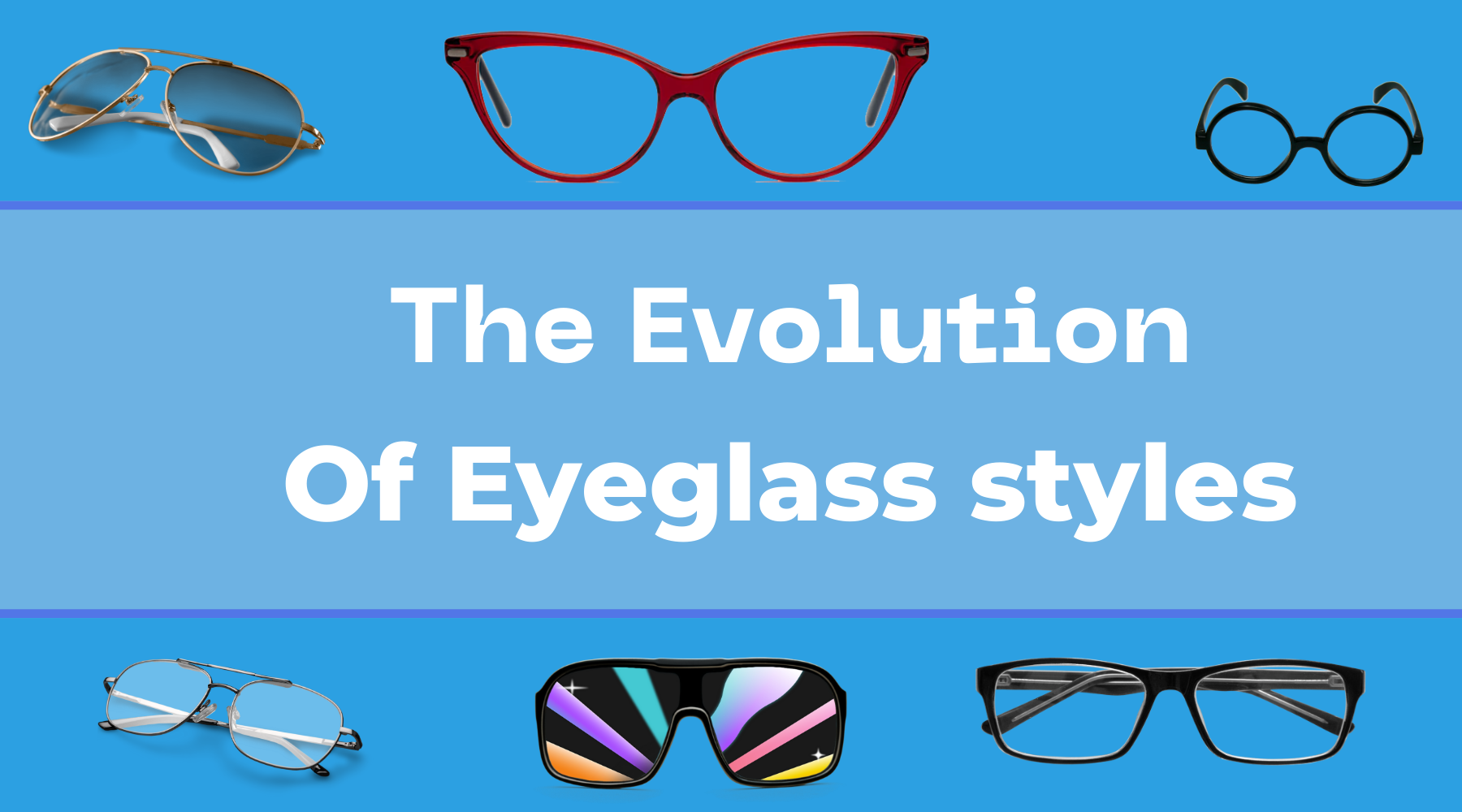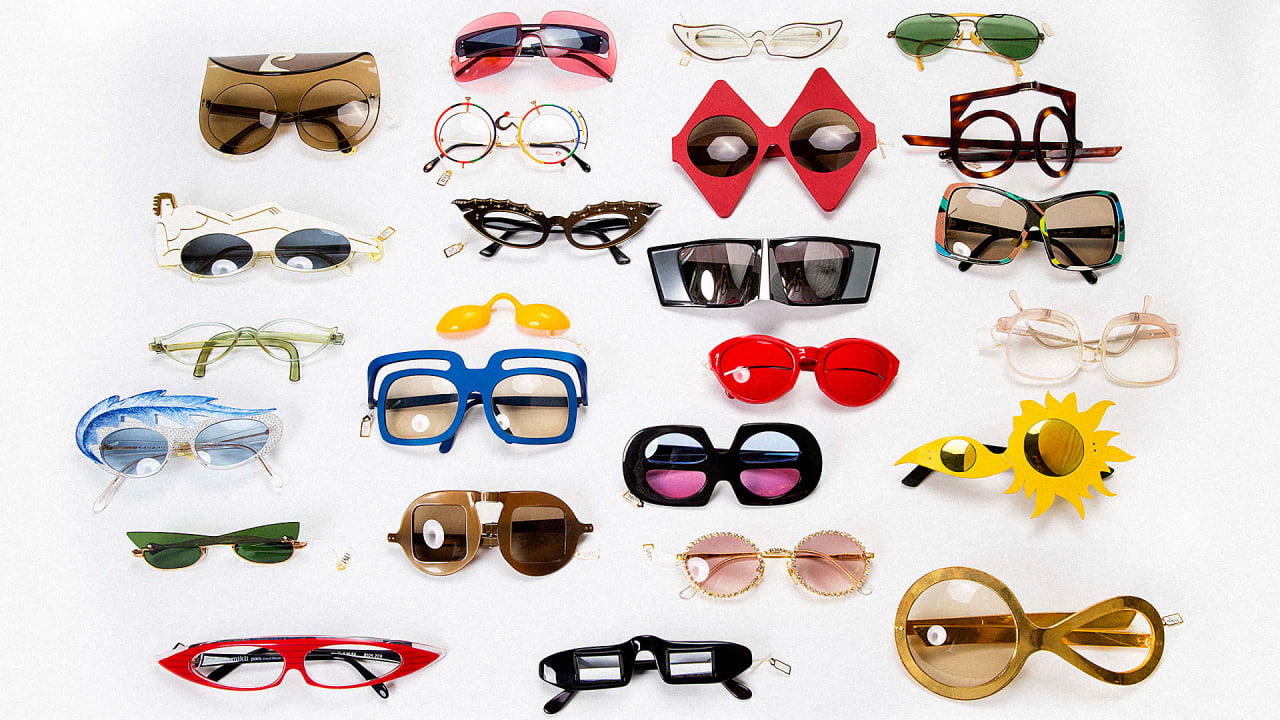Blog
The Evolution of Eyewear: From Function to Fashion
Eyewear has come a long way since its inception, evolving from a functional necessity to a significant fashion statement. This transformation reflects broader changes in society, technology, and culture. In this comprehensive exploration, we will delve into the fascinating history of eyewear, examining its evolution through various eras and highlighting key innovations, styles, and cultural influences that have shaped its current status as a fashion accessory.
The Origins of Eyewear
Ancient Beginnings
The concept of eyewear dates back centuries, with the earliest known visual aids believed to have been used by the Romans as early as the 1st century AD. These early spectacles were made from polished crystal or glass and were primarily designed to aid in reading and close work.
- Reading Stones: These were simple magnifying glasses made from crystal or glass, used to help with reading. They were held over the text to enlarge the letters, providing essential aid to those with presbyopia.
The First Glasses
The first true glasses, equipped with lenses, emerged in Italy during the late 13th century. These spectacles were made of convex lenses set in a frame, allowing users to see better at close range.
- Craftsmanship: Early glasses were hand-crafted by skilled artisans, with frames made from materials like wood, leather, and metal. They were often expensive and seen as a luxury item for the wealthy.
The Rise of Functional Eyewear
The Renaissance and Enlightenment
The Renaissance period marked significant advancements in optics and lens-making. During this time, glasses became more widely accepted and accessible.
- Innovations in Lenses: The introduction of concave lenses for myopia (nearsightedness) expanded eyewear’s functionality. This period also saw the development of bifocals, attributed to Benjamin Franklin in the 18th century, allowing wearers to see at multiple distances without changing glasses.
Industrial Revolution
The Industrial Revolution brought about mass production techniques, making eyewear more affordable and accessible to the general public.
- Standardization: The introduction of standardized lens prescriptions and mass-produced frames meant that more people could benefit from corrective eyewear. By the late 19th century, glasses were becoming a common accessory for individuals of all ages.
The Transition to Fashion
The 20th Century: A Cultural Shift
As the 20th century progressed, eyewear underwent a notable transformation from a purely functional item to a fashion accessory. This shift was influenced by various cultural and social factors.
Hollywood Influence
The Golden Age of Hollywood in the 1920s and 1930s played a crucial role in shaping eyewear as a fashion statement.
- Star Power: Celebrities like Clark Gable and Greta Garbo were often seen wearing stylish frames, which contributed to the perception of glasses as a chic accessory. This era popularized specific styles, such as oversized frames and cat-eye designs.
The Birth of Designer Eyewear
By the 1970s, eyewear began to be produced by high-end fashion brands, further cementing its status as a fashion item.
- Designer Collaborations: Brands like Ray-Ban and Gucci started to create fashionable frames that appealed to consumers seeking style and status. The introduction of sunglasses as a fashion accessory also gained momentum during this time.
The Evolution of Eyewear Styles
Iconic Styles Through the Decades
Each decade has brought unique eyewear styles that reflect the fashion trends of the time. Here’s a look at some iconic styles:
1920s: The Cat-Eye Frame
The cat-eye frame emerged as a popular style among women in the 1920s, characterized by its upswept outer edges.
- Feminine Flair: These frames were often adorned with decorative elements, such as rhinestones or intricate designs, making them a bold statement piece.
1950s: The Wayfarer

The Wayfarer, introduced by Ray-Ban in 1952, became an iconic style in the 1950s.
- Cultural Impact: Popularized by celebrities like James Dean and Audrey Hepburn, the Wayfarer’s classic design made it a staple in American fashion.
1970s: Oversized Frames
The 1970s saw a trend towards oversized frames, with styles that were bold and statement-making.
- Fashion Statements: These frames often featured bright colors and unique shapes, reflecting the era’s vibrant fashion sensibilities.
1980s: The Aviator
Originally designed for pilots, aviator sunglasses became a fashion staple in the 1980s.
- Timeless Appeal: With their distinctive teardrop shape, aviators exuded a sense of cool and adventure, becoming synonymous with pop culture icons.
2000s: The Retro Revival
The early 2000s marked a resurgence of retro styles, with vintage-inspired frames gaining popularity.
- Nostalgic Trends: Styles such as round frames and thick plastic designs from the 1960s and 1970s returned to the forefront, appealing to a new generation of eyewear enthusiasts.
Technological Advancements in Eyewear
Innovations in Lens Technology
The evolution of eyewear has been accompanied by significant advancements in lens technology, enhancing both functionality and comfort.
Progressive Lenses
Progressive lenses provide a seamless transition between different prescriptions, allowing wearers to see clearly at all distances without visible lines.
- Convenience: This technology is particularly beneficial for older adults who require multifocal lenses.
Blue Light Blocking Lenses
With the rise of digital screens, blue light blocking lenses have gained popularity. These lenses filter out harmful blue light emitted by screens, reducing digital eye strain.
- Health Benefits: Many users report improved comfort and reduced fatigue when using blue light filtering lenses, especially during prolonged screen time.
Photochromic Lenses
Photochromic lenses darken in response to sunlight and clear up indoors, providing convenience and protection from UV rays.
- Adaptability: These lenses are ideal for individuals who frequently transition between indoor and outdoor environments.
Eyewear as a Fashion Statement
The Rise of Eyewear Fashion
Today, eyewear transcends its functional purpose, serving as a powerful fashion accessory that can enhance an outfit and express individuality.
Celebrity Influence
Celebrities continue to play a significant role in shaping eyewear trends. High-profile figures often collaborate with eyewear brands, launching exclusive collections that set new fashion standards.
- Social Media Impact: Platforms like Instagram and TikTok amplify these trends, allowing eyewear brands to reach wider audiences and influence consumer choices.
The Role of Eyewear in Personal Branding

Eyewear has become an essential element of personal branding, with individuals using glasses to convey their style, personality, and even profession.
- Signature Styles: Many people curate their eyewear collection to reflect their unique tastes, opting for frames that align with their personal style and lifestyle.
Sustainable Eyewear: A Modern Trend
Increasing Awareness of Sustainability
As awareness of environmental issues grows, many eyewear brands are incorporating sustainable practices into their production processes.
Eco-Friendly Materials
Brands are increasingly using sustainable materials such as recycled plastics, biodegradable acetate, and natural materials like wood.
- Responsible Production: Companies are also focusing on ethical manufacturing practices, ensuring fair labor conditions and minimizing their environmental impact.
The Future of Eyewear
The eyewear industry is poised for continued evolution. As technology advances and consumer preferences shift, we can expect to see more innovations that enhance both functionality and style.
Smart Glasses
The rise of smart technology has led to the development of smart glasses, which incorporate features such as augmented reality (AR) and heads-up displays.
- Integration: Smart glasses offer a glimpse into the future of eyewear, combining fashion with cutting-edge technology.
Conclusion
The evolution of eyewear reflects broader societal changes, technological advancements, and cultural influences. From its origins as a functional tool for vision correction to its current status as a fashion staple, eyewear has transformed dramatically over the centuries.
Today, eyewear is not only about seeing clearly; it is about making a statement, expressing individuality, and embracing style. As the industry continues to innovate, we can anticipate exciting developments that will further blend functionality with fashion, ensuring that eyewear remains an essential and dynamic part of our lives.
Whether you’re seeking stylish frames, advanced lens technology, or eco-friendly options, the world of eyewear offers something for everyone. Embrace the evolution of eyewear and discover how this accessory can enhance your vision and style.


